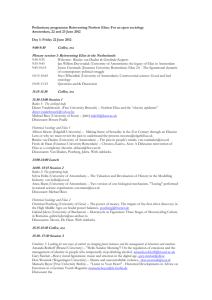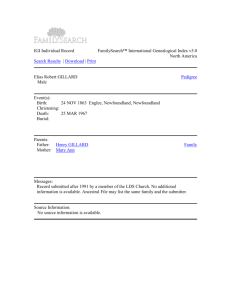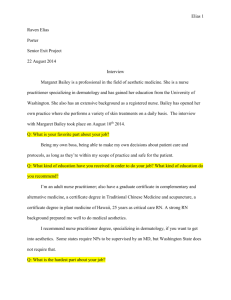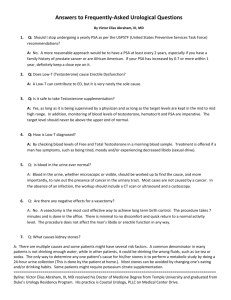Norbert Elias`s Contribution to Psychoanalytical History
advertisement
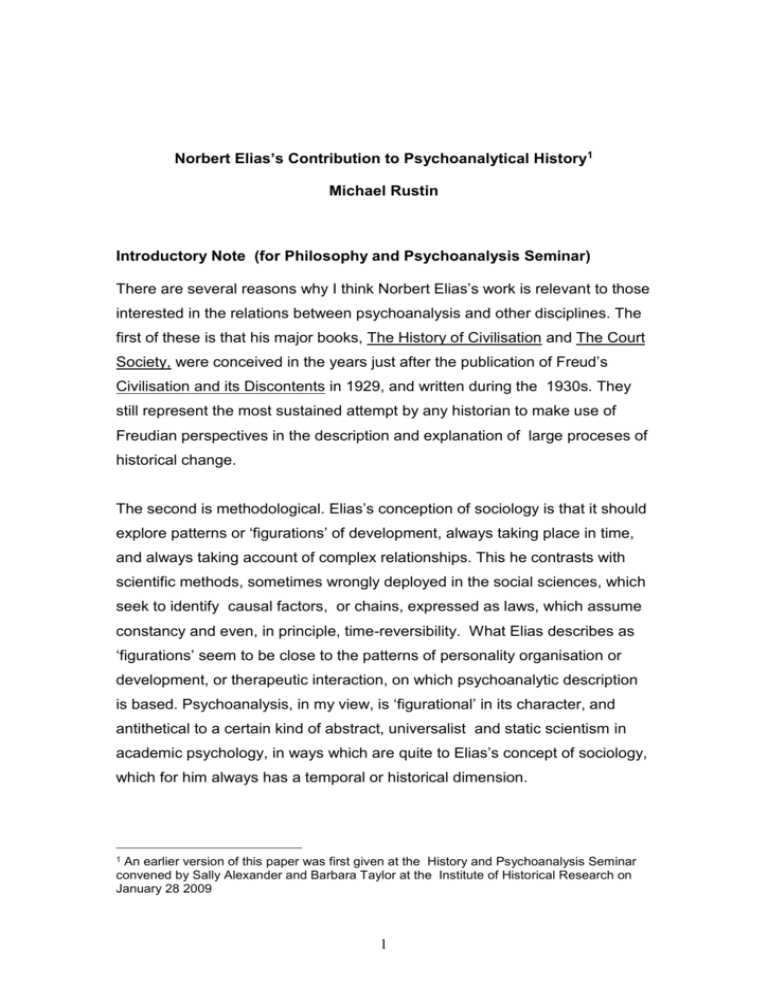
Norbert Elias’s Contribution to Psychoanalytical History1 Michael Rustin Introductory Note (for Philosophy and Psychoanalysis Seminar) There are several reasons why I think Norbert Elias’s work is relevant to those interested in the relations between psychoanalysis and other disciplines. The first of these is that his major books, The History of Civilisation and The Court Society, were conceived in the years just after the publication of Freud’s Civilisation and its Discontents in 1929, and written during the 1930s. They still represent the most sustained attempt by any historian to make use of Freudian perspectives in the description and explanation of large proceses of historical change. The second is methodological. Elias’s conception of sociology is that it should explore patterns or ‘figurations’ of development, always taking place in time, and always taking account of complex relationships. This he contrasts with scientific methods, sometimes wrongly deployed in the social sciences, which seek to identify causal factors, or chains, expressed as laws, which assume constancy and even, in principle, time-reversibility. What Elias describes as ‘figurations’ seem to be close to the patterns of personality organisation or development, or therapeutic interaction, on which psychoanalytic description is based. Psychoanalysis, in my view, is ‘figurational’ in its character, and antithetical to a certain kind of abstract, universalist and static scientism in academic psychology, in ways which are quite to Elias’s concept of sociology, which for him always has a temporal or historical dimension. 1 An earlier version of this paper was first given at the History and Psychoanalysis Seminar convened by Sally Alexander and Barbara Taylor at the Institute of Historical Research on January 28 2009 1 Thirdly, we might note Elias’s great hostility to a certain aspect of the western philosophical tradition, which he regards as mistakenly individualist in its presuppositions, constructing, since Descartes, abstract notions of the self which exclude the various relational dimensions (culture, language, dependence on others) without which no significant self could exist. It may well be that those whose conception of philosophy is more influenced by the later Wittgenstein than by Descartes might feel their philosophical approach is of a different kind than Elias had in mind. But since he engaged critically with philosophy as a mode of thought, his writing might be of interest to philosophers for this reason. We certainly do need some models and examples of how to think in psychoanalytic ways about phenomena outside the consulting room, and I suggest that Elias provides a good one. We can consider in discussion what might he missing in it, or indeed how his approach be extended to take account of many post-Freudian developments in psychoanalysis of which Elias took little explicit account. Elias’s Unusual Career One of the major classics of historical sociology – Norbert Elias’s The Civilising Process – was first published in German in Switzerland in 1939, but translated and published in English only in 1978. (He had begun to be recognised a decade or so earlier, following the reissue of the German edition of The Civilising Process in 1969.) Elias was born in Germany in 1897, so at the date of translation in to English of his most important work he was already, astonishingly, 81. He had come to England from Germany as a Jewish refugee in 1935 and was briefly interned early in the war on the Isle of Man. He had begun his career in Germany in a junior position at the University of Frankfurt, but in England he found himself working for many years on the margins of academic life as a researcher and teacher. He was given his first university appointment only in 1954, in the Sociology Department at Leicester University, eight years before his statutory retirement. All of his many works were published and in many cases written after his formal retirement in 1962. 2 Fortunately, he lived to the considerable age of 93, dying in 1990. He became famous in the 1970s and 1980s, especially in Holland and Germany, but also with some significant recognition in Britain, and produced significant works in his later life, sometimes with enthusiastic younger collaborators. This was an unusual career pattern, to say the least, and perhaps accounts for the somewhat shadowy place that Elias’s work has in the academy. He was apparently regarded at the University of Leicester as somewhat curious, a man out of his time, and the worldwide esteem he eventually achieved came largely after his academic retirement. History and Psychoanalysis Elias thought of himself as a sociologist, not as a historian, so before considering the relationship of his historical writing to psychoananalysis, there is a debate to be had about the relations between the fields of sociology and history. There can hardly be a discussion of Elias’s contribution to psychoanalytical history if one does not recognise him as a historian in the first place. So one should begin by giving some attention to that issue. Elias’s work is historical in two senses. One of these is literal and obvious – a matter of subject-matter and content. Elias’s largest works, The Civilising Process, and The Court Society seek to describe and explain changes in the behaviour and ‘social character’ of the upper classes in the West, taking place over the period from the Renaissance to the age of Absolutism – the Court Society takes as its exemplary instance the court of Louis IV in France. The researches he and his colleagues later undertook on the emergence of modern sports are also historical in focus, since Elias offers a historical explanation, linked to that underpinning his earlier work, of this development and its meaning. His late and incomplete book on Mozart is similarly historical in its analysis, explaining the ultimate tragedy of Mozart’s life – he died as a pauper – and also his genius, as that of an artist whose attempts to achieve ‘bourgeois’ autonomy as an artist were defeated by the continuing monopoly of cultural power held in Germanic Europe at that time by the courts and the bishops. Elias’s argument is that Mozart tried and failed to find a sufficient 3 market for his work, outside of court circles, particularly when the sympathy for the new enlightenment spirit expressed in his later operas met with an unfavourable response from former patrons in Vienna. Musically, Elias says, Mozart’s intense emotional sensibility, anticipating the Romantic period, took shape within the thoroughly classical musical formation he had learned from his childhood. The second sense in which Elias’s work is historical is less obvious, and more challenging. He argued, against most of the sociological discipline of his time, that sociology should be the study of processes located in time, and not of states or structures. Sociologists had taken as their primary subject-matter essentially static entities – the Parsonian idea of the ‘social system’ dominant during much of Elias’s career was a prime example and Elias’s implicit intellectual adversary2 – and had then struggled to explain how changes within and between them could take place. Their usual method of representing change was by contrasts and comparisons of different idealtypical structures – Durkheim’s mechanical and organic solidarity, and Weber’s traditional, charismatic and rational-legal types of authority, are leading examples. (This approach has been termed ‘comparative statics’.) How these forms of social organisation actually mutated into one another had usually been a secondary concern for sociology. Marx came much closer to a conception of society as process, and was thus a significant influence on Elias, but Marx’s work was vitiated for Elias by its excessively teleological and political commitment, and by its privileging of the developments in the sphere of production over all others.3 Elias argued, in It is another example of Elias’s situation of displacement within his discipline that he was not seen as a significant figure in the major anti-functionalist controversies in sociology of the 1960s. 3 The Frankfurt School of Adorno, Horkheimer and others was also located at the University of Frankfurt, in the same building as the Department of Sociology where Elias was a protégé of Karl Mannheim, who like him came to England as a refugee from the Nazis. Elias’s work came to represent a line of development distinct from that of the Frankfurt School Marxists, though he shared with them a deep interest in the psychoanalytical understanding of social and historical processes. Perhaps the most important difference between them lay in Elias’s insistence on the necessary separation of social science from political commitments. This commitment to scientific understanding as an autonomous value also later separated Elias from his former mentor Karl Mannheim, who as a sociologist in London sought to apply 2 4 later defence of his Civilising Process thesis, that the establishment of a monopoly of violence by states had been the precondition for economic development, and could not be accounted for as its effect. But Elias was in any case critical of the framing of historical and sociological explanations as questions of cause and effect, holding that the search for laws and causal relations was a misapplication of assumptions about the universal and uniform properties of nature, derived from the natural sciences, to a human and social sphere which was not at all uniform in its essential properties Elias argued that an underlying atomism and methodological individualism underlies the model of causality which is misapplied in the social science. Quantitative methods can be deemed to be critical to issues of validity only on the principle that the entities being treated as aggregates are uniform. His view, closer to the biological sciences, is that social structures have emergent holistic properties, larger than the sum of their parts, and that valid explanations have to take account of their particularities. This is much closer to the assumptions made in much historical explanation, as welll as, one might add, to explanations in the psychoanalytical field. Elias developed a concept of what he called ‘figuration’, 4 which I think has relevance to all three disciplines of history, sociology and psychoanalysis as a mode of understanding the centrality both of holistic patterning and structure, and process, to all of them. The first chapter of The Court Society, ‘Sociology and Historiography’, sets out Elias’s position on this issue. He criticised most historical writing, as being excessively descriptive, too much shaped by the value-orientations of historians in each generation, and too much dominated by the idea that explanations of historical particulars can sufficiently be found in the role of individuals and their agency. ‘In historiography’, he writes, ‘there is certainly a continuous growth of particular knowledge, but there is no continuity of growth sociology in a social democratic mode to the project of ‘social reconstruction’. Elias remained left-of-centre in his political outlook, but sought to maintain a clear separation between the work of understanding and explanation and moral commitments other than the commitment to the goal of objective understanding, which was a moral commitment in itself. 4 Those influenced by Elias defined a field of ‘figurational sociology’ inspired by him. 5 on the plane of a unifying framework’. (op cit. P 9. ). He is equally critical of versions of sociology, in particular the structural-functionalist theories of Talcott Parsons, which were dominant in the field during much of Elias’s career, whose determinism of structures leaves an unbridgeable gulf between societies and individuals. Weber’s concept of ‘ideal types’, finding typical patterns of social organisation, comes nearer in Elias’s view to a successful synthesis between sociology and historiography. The limitation of this method, he argues, is its extensive nature, its classification of so many historical instances under the same concept as to lead to an undue abstractness and over-generalisation. Weber’s ideal types, in Elias’s view, became overly stretched by the sheer volume of the instances and differences which they sought to encompass. Elias recommends an intensive method of investigation5 which can identify the detailed patterns of interaction which occur within a typical pattern of organisation, and in particular can enable social scientists to clarify the scope for actions and choices for individuals located in different positions within such a structure. It is this intensive method of investigation of what he calls a ‘figuration’ (configuration is a more familiar term, perhaps) that Elias recommends as the essential work of sociology, and probably in his view of historiography too. Elias argues that confusions of historical and sociological method have arisen through a failure to recognise and distinguish between three distinct levels of social process. One of these is ‘biological evolution’, which has established certain enduring patterns and capacities in human beings, a geneticallyendowed ground from which social development has proceeded. The second is ‘social development’, which has proceeded at a much more rapid pace than evolutionary development. Enormous changes in social configurations have taken place over what is in evolutionary terms the extremely short period of ten thousand years or so. The third is ‘history’, by which he means the actions and changes with occur within the life-span and Elias’s distinction between extensive and intensive methods of research is parallel to that made by Rom Harré in his advocacy of methodological realism in the sciences. Harré unfavourably contrasts the aggregative, atomistic and individualistic perspectives of mainstream psychology, with approaches based on an understanding of human behaviour as essentially relational and rule-governed. 5 6 memory of an individual or a generation, but which are nevertheless subject to the constraints, which are often barely visible to social actors, of a particular social development or ‘figuration’. Elias argues that historians tend to identify with, and focus on, the perspective of individual actors, failing to recognise how individuals’ freedom of action (even if they are powerful monarchs like Louis IV) is always constrained by the larger configuration of dependencies in which they are located. Such configurations persist while many generations of individuals (like individual kings or even dynasties in Court Society) successively pass through them within their life spans. Elias’s idea that different temporalities of change needed to be recognised in historical and sociological study has parallels in the work of the historians of the French Annales School, and in Althusser’s work which in this respect were influenced by this. Elias’s view of historical and sociological method, and his insistence on differentiating between the understanding of individuals’s freedom of action, and the structure of relationships which shapes this, has a bearing on the possible role of psychoanalytical explanation in history. In particular, it suggests that psychoanalysis might be relevant not only to understanding the motivations and behaviour of individual historical actors (assuming we know enough about their biographies to make such imputations convincing) but also to understanding the unconscious states of mind engendered at a ‘group’ or ‘social level.’ As we will see, Elias’s own engagement with psychoanalytical modes of explanation is primarily at the level of the group or typified individual, and not in the form of the biographical analysis of historical individuals, or ‘psycho-biography’. It seems likely that this differentiation between the ‘group based’ and ‘individually-based’ application of psychoanalytical ideas to historical materials is a fundamental one, and that the failure sufficiently to recognise it has been a limitation of previous work in psychoanalytical history. Psychoanalysis in Elias’s Work 7 The links between Elias and psychoanalysis are very close, both biographically and in the development of Elias’s intellectual work, from its earliest days. He was an associate of S.J. Foulkes, who like him fled to England from Frankfurt (he was formerly Fuchs before his exile) and was his collaborator in the original development of Group Analysis in England in the 1930s and 1940s. He had a personal analysis, although with which analyst I do not yet know. Elias’s methodological insistence that study must be ‘intensive’, and engage with particular details of experience, is reflected presumably in his own form of engagement with psychoanalysis, which was as an analysand and group therapist, and not only as a reader of Freud’s work. It seems that the experience of Group Analysis, in its earliest days, must have been important in enabling Elias to grasp the possible relevance of psychoanalytic explanations to changes occurring at a social level. It is possible that in developing the practice of Group Analysis, with S.J. Foulkes, Elias was able to observe in microcosm some of the psycho-social processes of the inhibitions of instinctual impulse, and the development of a capacity for self-reflection, which he interpreted as fundamental in his account of the larger historical ‘civilising process’ which was the subject of his major work. Zigmunt Bauman, in a 1979 review article (1979) reviewing four books by and about Elias at the point when his reputation was growing, perceptively noted that The Civilising Process is in effect the embodiment of the thesis of Freud’s Civilisation and its Discontents as a historical narrative (or perhaps we should say as a narrative of historical sociology.) Bauman pointed out that Elias undertook the documentary field work for his major works soon after the 1929 publication of Freud’s book. The thesis of The Civilising Process is that the development of modern ways of life, culture, and social character depended above all on the inhibition of instinctual drives and impulses, through the internalisation of moral and aesthetic restraints, and through the emergence of forms of symbolic expression that can be equated with Freud’s idea of sublimation. Thus repression and sublimation are for Elias the keys to the understanding of social and cultural development in the West. 8 Among the primary historical materials on which Elias drew in developing his thesis were books written during the Renaissance, for example by Erasmus, Castigione and Della Casa, to instruct elite circles on prescribed ways of behaving in public. (The title given to the first volume of The Civilising Process in its 1978 publication in England was The History of Manners, though this sub-title, which seemed to some to trivialise Elias’s argument, has been dropped from later editions.). Elias notes how numerous widelycirculated books of etiquette instruct their readers in how to restrain their instinctual and bodily impulses. He discusses the use of knives and forks, nose-blowing, spitting, behaviour in the bedroom, attitudes towards the relations between men and women, and changes in tolerated aggressiveness. His argument is that the prescriptions set out in these manuals of acceptable behaviour reveal as their negative a preceding and prevailing state of affairs, in which little self-restraint and decorum was observed in performance of these functions. In the pre-civilised state of warrior societies in which the baronial castle was the dominant institution, delight was found, he says, in extreme manifestations of violence, both in battle and in the treatment of deviants and criminals. Women could be taken at will by stronger men, unless protected by their kin. Meals and feasts were uncouth affairs, with people snatching at meat with their hands, throwing unwanted pieces on the floor, spitting and discharging phlegm at will. Urination and defecation could and did take place anywhere. 6 Elias develops a complex thesis to describe and explain the transformations that took place in these modes of behaviour, and in the mentalities that went with them. Key to this process was the growth of power by centralised 6 Shakespeare perhaps imagines this archaic state of affairs when he has Goneril reprove King Lear for the behaviour of his followers in her castle: Here do you keep a hundred knights and squires; Men so disorder’s, so debosh’d , and bold, That this our court, infected with their manners, Shows like a riotous inn: epicurism and lust Make it more like a tavern or a brothel Than a grac’d palace. (King Lear, I. 4, 237-243) 9 monarchies, at the expense of the territorial and warrior aristocracy within their domains. Elias described the accretion of power by monarchs as having been accomplished by their encouragement of the growth of trade and cities, with the rise of the bourgeoisie functioning as a balance to the power of the territorial aristocracy. Growing tax revenues based on bourgeois trade allowed the monarchs to maintain armed forces larger than those of any of their subjects, and to use them to suppress threats to their power. Elias grasps through this analysis the interdependence between different modalities and sources of power, and the consequences of their changing balance over time. He also understood, in relation to Court Society, how powerful actors could enhance their own power through their control over and manipulation of different power-resources, as the monarchy did in its balancing of the territorial aristocrats against the mercantile bourgeoisie. He also understood how this different figures exercised effects on personality structures, and on cultures. 7 What is original in The Civilising Process and its prequel, The Court Society, is Elias’s investigation of the consequences of the limitation of everyday violence for the mentalities and everyday forms of life, first of the aristocracy, and then by downward percolation to bourgeois and eventually other social strata. One of Elias’s dispute with Marxists was his view that power-sources were various, and could not be reduced to the overriding effects of the mode and relations of production. Indeed his developmental thesis seems to have been that the control of violence by states was the precondition for the rise of mercantile society, and thus capitalism. In his discussions of different power resources, and their combination in different ‘figurations’, Elias anticipated the theoretical ideas of modern Weberian sociologists like Anthony Giddens and Michael Mann. (Giddens was in fact a student at Leicester in Elias’s last years, but does not discuss his work.) The Althusserian and Gramscian developments in Marxism, influential in the 1970s, represented an attempt from within Marxism to take account of the greater complexity of forms of power - economical, political cultural – than classical Marxism had recognised. 7 Elias makes use, in the 1930s, of the concept of habitus, to describe implicit cultural rules of behaviour, which became salient in sociology only in the 1970s and later in Bourdieu’s work. (Bourdieu however was generous about Elias’s contribution.) We can further see an affinity between Foucault’s historical investigations of changing mentalities, as effects of different power regimes, and Elias’s interest in the relations between patterns of social domination and subjectivity, though while Elias drew on Freud’s ideas, in developing his argument, Foucault, and Deleuze, have sought to reverse the terms of Freud’s argument, seeing the penetration of inner desires by cultures of regulation, sometimes masquerading as individual liberation, not their repression by overly oppressive social morality, as the key problem. Deleuze and Guattari’s most influential work (1984), preface by Foucault, is called Anti-Oedipus. But I suppose Deleuze proposes another kind of figurational approach. 10 Elias’s thesis is that more extensive chains of dependency brought the necessity for complex perceptions and discriminations of motive, and for the deliberate calculation of what behaviours might be productive in what contexts of relationship. The self, in Elias’s view, becomes more complex, and develops an inner reflective capacity, as the relations and dependencies in which it is embedded become more differentiated. A central argument of The Court Society was that Louis IV’s requirement that nobles must spend a large amount of time at his court was a means of controlling and disciplining them. Elias describes the development of elaborate codes of deference and respect, due at each level of a subtlydefined and ever-changing status hierarchy. Those who wished to flourish within such an environment were required to develop a keen sensitivity to signals of respect and disrespect, and the ability to calculate how to display and present themselves in public in order to gain favour. He also noted the emergence of a conception of private space, initially at the highest levels of the social hierarchy, and the scope for intimacy and for the more delicate understanding of feelings, which this made possible. It is in the ‘intensive’ study of The Court Society that Elias developed the understanding of the consequences of inhibited instinctual impulses which then became the larger theory of social transformation of The Civilising Process, a few years later. Elias is essentially describing transformations in the modalities of power, from a situation in which resort to violence was ubiquitous, to one in which it receded somewhat into the background, though remaining an ever-present resource which could on occasion be deployed against rivals or to discipline subordinates. Commentators on Elias’s work have drawn attention to similarities between his discussions of the figurations of court society, Goffman’s work on the performances of self in everyday settings, and Veblen’s analysis of the functions of ‘conspicuous consumption’ in demonstrating status and power. . 11 The psychoanalytic dimension of Elias’s analysis lies in his understanding of the internalisation of moral restraint which was essential to this ‘civilising process‘. He is describing an historical process of the repression of instinctual impulses, such that their inhibition comes to seem natural and automatic. As an example of the depth and extent of this process of inhibition, consider changing modes of sexual behaviour, from contexts in which young men and women could not be trusted to be with one another without supervision, to that of the contemporary environment in which high degrees of sexual provocation and stimulation are expected to be combined with, most of the time, and except in conditions of culturally-constructed licence, the inhibition of actual sexual activity. It seems likely that differences in these modes of inhibition are one source of cultural and moral division between the individualised west, and segments of Islamic society today. Even within a generation, in Europe, changes in these modalities have been quite evident, for example in the degree to which women could expect routinely to be physically hassled in public places, for example in the south of Italy. On the positive side, in the Freudian sphere of sublimation, Elias argued that the inhibition of impulses and the necessity to develop an inner mental space in which reflection on them could take place, led to the differentiation of mental life, including the spheres of science and the arts. Elias argued that the essence of a scientific approach lay in the necessity for the subject’s own desires and preferences to be separated from his work of understanding. His view of ‘the civilising process’ as the inhibition of instinctual impulse thus informs the ideal of an understanding free of subjective values and preference which he proposes for the social sciences and tries to embody in his own work.8 We can see some affinity between this perspective and the idea that psychoanalysts should bring to their interactions with patients an attentive stance free from personal interest or preconception. Bauman in his 1979 review article argues against Elias’s excessive stress on objectivity and value-freedom, pointing out that one can hardly separate Elias’s own perspective, for example in his study The Established and the Outsiders, from his own experience as a marginal citizen, in this respect similar in situation and pespective to other sociological theorists of marginality such as Simmel and Schutz. 8 12 The analysis of the development of sports which Elias undertook with Eric Dunning (Elias and Dunning 1986) was an extension of the ‘civilising process’ model to a major field of contemporary life. Modern sports, such as football, athletics, boxing and wrestling, give a public symbolic expression both to the desire vicariously to discharge impulses of aggression and violence, and to inhibit and confine them to a more or less symbolic form. They note the declining levels of actual violence to be found in modern sports, compared with their earlier forms. The extent to which deliberate long-term injury is permitted to be inflicted is severely constrained in the rules of modern sports.9 In some sports, such as Rugby Union football, the detailed and specific regulation of permitted levels of violence now has an important role in the symbolism of the game itself. Skilled rugby players are required to remember and internalise very complicated rules about what forms of physical aggression, in what passages of the game, are and are not permitted. Instead of, as with most games, waiting for offences to be committed, and then punishing them, rugby referees give loud advice and warnings to the players about what they may and not do, presumably on the basis that the rules and situations are too complicated for players to be able to do this by themselves. Referees, as the external agents of inhibition, thus have a central role in the symbolic performances of many modern sports. (Indeed, in soccer, referees are almost like pantomime villains, there, as the embodiments of authority, to be ridiculed and abused. Yet they clearly have a 9 Shakespeare again reminds us of the earlier era and of the moment at which a gentler sensibility emerged, as a courtier tells Rosalind and Celia in As You Like It about a wrestler whom Orlando is soon going to challenge. It is a sad story of an old man with three sons: LE BEAU The eldest of the three wrestled with Charles the Duke’s wrestler, which Charles in a moment threw him and broke three of his ribs, that there’s little hope of life in him. So he served the second, and so the third. Yonder they lie, the poor man their father making such a pitiful dole for them that all the beholders take his part in weeping. ROSALIND Alas! TOUCHSTONE What is the sport monsieur, that the ladies have lost? LE BEAU Why this that I speak of. TOUCHSTONE Thus men grow wiser every day. It is the first time I heard breaking of ribs was sport for ladies. As You Like It I, 2 115-129 13 crucial role in the psychic and moral economy of the game.) A sport such as motor racing, one of whose main sources of excitement must be the anticipation that racing cars will crash and disintegrate at high speed, has imposed regulations on the design of cars, and the conduct of races, such that ‘safety cars’ emerge to slow things down in the event of emergencies, and drivers are so well packaged in their cockpits that they mostly escape serious injuries when crashes do occur. Elias’s and Dunning’s thesis goes a long way to explaining the extraordinary salience of sport in modern culture, among all social classes, since it provides graphic and immediately accessible symbolisations of many instinctual impulses - violence, (mainly) homoerotic sexuality, rivalry, group identification - but within a context in which they are relatively inhibited, and indeed in which the necessity to and the modes of inhibiting them is also subject to public display and exploration. Elias’s theory of the civilising process was developed at a time when the Nazis had just risen to power, and had driven him from Germany. His study of the growth of civilisation was as perhaps a surprising juxtaposition of topic and context, the contrary of the intellectual response of his Frankfurt School contemporaries to the same situation. While Elias was studying the development of civility in the early modern period, Adorno and Horkheimer were preoccupied with understanding the collapse of civilised life that surrounded them in the twentieth century. It seems likely that Elias, in his early years in England, was continuing, largely in isolation, the project he had formulated earlier, during the Weimar years which like many others he had probably experienced as a hopeful period. However, he did not believe that ‘civilisation’ was an irreversible process of improvement, and in his later work explored, with new-found colleagues, the reverse development, the conditions of societal regression or ‘decivilisation’. One study in which the issues of ‘decivilisation’ were explored in the ‘intensive’ way which Elias preferred was ‘The Established and the Outsiders: a Sociological Inquiry into Community Problems’, (Elias and Scotson 1965). This was a study of a small community, fictitiously called ‘Winston Parva’, which was experiencing rather severe group conflicts. The authors identified 14 three major groups in this community. There was a small middle class, and two working class groups, the latter two being largely identical in their demographic and occupational make-up. The difference was that one group had been long-established in the community, and the other had recently settled there. The ‘outsider’ group was defined by the established group as inferior, deviant, shiftless, etc. , represented as members of the ‘nonrespectable’ working class in contrast to the ‘respectable’ working class status of the established group. The researchers found there was no factual basis for the distinction between these communities. However, as a social definition of the reality it had powerful effects. Subject to this stigmatisation, and without the long-established social ties which joined the members of the established group, the ‘outsider’ group remain atomised, and tended to internalise the version of itself held by its ‘established’ neighbours. Urban legend and gossip gave credence to the stereotypes of inadequacy held of the’outsiders’ by the ‘insider’ group. Members of the small middle class segment, which in other circumstances might have been resented for their relative privilege, were regarded by the established working class group as an assets to the status of the neighbourhood, and co-opted as virtual allies in the stigmatisation of the newcomers. We might say, using psychoanalytical concepts developed post-Freud, that powerful unconscious projections were being made by the ‘insider’ group towards the ‘outsiders’, and that these had real effects on the identities of those projected into. One can see how Elias’s involvement in the development of Group Psychoanalysis, with Foulkes, may have contributed to his understanding of these social dynamics. A richer and more differentiated psychoanalytical lexicon would allow more complex descriptions to be formulated of these and similar dynamics, but nevertheless consistent with Elias’s original purpose. Elias’s explanation, in The Civilising Process, of the transformation of instinctual impulses into more differentiated emotional and mental capacities, lay in a theory of complex social dependencies. His argument was that as the chain of dependencies in society grew, for example through trade, an extended division of labour, and communication, so more complex forms of perception and discrimination grew also. This argument is quite close to that 15 of Durkheim’s Division of Labour in Society, which argued that individuality depended on the emergence of complex forms of social relation in which individuals became emancipated from subordination to the immediate collectivities to which they belonged. Similarly a court society, in which individuals were confronted with an elaborate social hierarchy in which they were required to compete for status and position, was a more complex system of dependencies than the household of a local baron or warlord. The regression which Elias and Scotson observed to have taken place in ‘Winston Parva’ was the consequence of a reduction of complexity of social relationships, to a polarised state in which what mattered most was membership of one of two rival groups. (In Durkheimian terms, this was a regression to ‘mechanical solidarity’, in which group membership is based on the idea that members share a uniform identity.) The outsider group found itself in a still worse condition, since the disrespect heaped on it inhibited the formation of group ties within its number, and thus further reduced the scope of dependencies. We can see the force of this model description if we apply it to other situations of group conflict, of a sectarian or ethnic nature, especially where these involve violence. Elias’s argument, concerning the conditions for both ‘civilisation’ and ‘decivilisation’ has been memorably extended to the analysis of racial divisions in the United States, in articles by Eric Dunning, Elias’s close colleague (Dunning recently described Elias to me in a seminar as ‘his second father’) and Loic Wacquant, a colleague of the late Pierre Bourdieu. Dunning’s argument, in ‘Black-white relations in the United States,’ (written in 1979, published in Loyal and Quilley 2004) provides a comparative typology of three successive ‘figurations’ of black-white relations. These are plantation slavery, the system of post-abolition colour castes, and the urban ghetto, emerging when Afro-Americans migrated to northern cities. In the condition of plantation slavery, ties between slaves were deliberately broken by separating slaves from different ethnic and language groups, so that communication within plantations was made difficult. They were subject to intense physical coercion, and allowed little autonomy. Some internalisation of the conception of passivity and incapacity projected into them was unavoidable. The colour 16 caste system of ‘Jim Crow’, allowed some greater autonomy, since some more complex division of labour emerged within the black population, though with severe limitations enforced by violence on how much mobility was allowed. The black ghettoes of the northern cities were another stage in this evolution, since in Dunning’s view this more concentrated settlement involved more complex and extensive chains of inter-dependency, through wage labour and the sanctions it made possible, the possibility of riot as a power resource, the emergence of a consumer market among African Americans, and the development of an internal social hierarchy in which a black bourgeoisie emerged. However this emergent black middle class was constrained by the exclusionary pressure of white racism to continue to identify with and advance the claims of the larger black population. Loic Wacquant’s article ‘Decivilising and demonising’, first written in 1991, (in Loyal and Quilley 2004) gives an account of later developments in this field in the United States. He analyses, through some of Elias’s key concepts, the ‘transition from the mid-century ‘communal ghetto’ to the contemporary ‘hyperghetto’, in terms of three master processes: the depacification of everyday life, social de-differentiation leading to the organisational deserfication, and informalisation of the economy. ‘ Each of these processes is set off ‘by the collapse of public institutions, and by the ongoing replacements of the ‘social safety net’ of welfare by the ‘dragnet’ of police, courts and prisons.’ In this abandoned situation, violence becomes endemic, social interdependencies become narrowed to the minimal ties of kinship and locality needed to ensure physical security and material survival. Wacquant holds this process of ‘decivilisation’, in Elias’s term, to be due to the abandonment by the state of responsibility for the well-being of its working class and especially black citizens, and its resort to punitive and coercive strategies to contain them. Wacquant’s article attacks the dominant neoconservative analysis of the situation, which was essentially one of ‘blaming the victim’ through the theory of the dangerous underclass’, arguing that its demonisation of the poor further contributed to the disorganising processes let loose by dis-investment in public resources and by de-industralisation. Its projection of fear and hatred into disadvantaged communities have a similar 17 role in this context to that described by Elias and Scotson in their more parochial community study. Wacqant argues that his analysis is relevant to the peripheral ghettos of European cities as well to those of the United States. His article reminds one that little has been heard, during the celebrations of the significance of Barack Obama’s election as president, of the continuing crisis of black American working class communities (with more young black men in prison than in university) nor is it yet clear how Obama’s Administration is going to address these problems. Implications and Conclusions What implications can we draw from Elias’s work, in regard to the project of a psychoanalytical history, and what developments might it lead to. . Let me suggest a number. The first point of note is the idea that psychoanalytical dimensions enter historical explanation at the level of group behaviour and group processes, as well as, and perhaps more than, at the level of individual motivation and action. This is exclusively the dimension on which Elias and indeed those influenced by him have focused. The second is to recognise the force of Elias’s analysis of a certain directional process in historical development, towards what we can see as a more regulated and inhibited social order, with many consequences for mentalities and forms of life. Freud’s thesis in Civilisation and its Discontents has an unexpectedly fruitful explanatory role, in explaining the development of social repression, and the sublimation of repressed impulses and desires, when conjoined with intensive historical investigation. The third is to note that his argument has also been fruitful when applied to processes of ‘decivilisation’, that is when the figurational movement defined as enlarged chains of social dependencies, complexity and differentiation, is forced for some reason into reverse. It seems to me that in explaining these situations, Elias and those 18 influenced by him may be implicitly deploying some psychoanalytical ideas – of splitting, paranoid-schizoid organisation, projective identification – which derive from a post-Freudian psychoanalytic climate. The fourth is to identify a different and more modern historical problematic, as, for example, both Bauman and Marcuse have done, and to ask how psychoanalytic theories can help us to understand this. This is the problemic of lessened social repression, arising from the emergence of consumer societies in which the social machine operates to provoke and stimulate desire, not to restrain it in the cause of social hierarchy or the process of capital accumulation. Different views have been taken of this process. Ernest Gellner, writing very positively about Freud late in his life, in 1995, describes Freud as the prophet of a more liberated, tolerant and enjoyment filled society. Marcuse writes on the contrary of ‘repressive sublimation’, and of a dystopia of commodity fetishism. Bauman writes of a movement from a hierarchical and authoritarian world, strong on ‘security and permanence, but weak on freedom, that Freud did much to undermine, and a current world of impermance, liquidity and insecurity, in which continuity and what some would call containment is lacking for the exercise of satisfying lives. It seems that a different, post-Freudian, even post-Kleinian psychoanalytic lexicon, might be needed to chart the shape of this world. Finally, a lesson one should draw from Elias is that generalisation is only to a limited degree possible. It is no good looking to Elias for a general formula. Social and historical entities do not come in uniform shapes and sizes, any more than personalities do, for clinicians. There is no subsitute, on this view, whether in historical, sociological or psychoanalytical work, from the intensive investigation of particulars, and the slow discovery, in face of experience, of which psychoanalytical or other theoretical concepts, can best give meaning to them. 19 The subject-matter of the human sciences, in other words, is irreducibly particular in its nature. Nevertheless, recurring patterns of ‘figurations’ are necessary and possible resources for understanding the differences and processes we encounter. References Dunning, E. (2004) ‘Aspects of the figurational dynamics of racial stratification: a conceptual discussion and developmental analysis of blackwhite relations in the United States. In Loyal and Quilley, op cit. Elias, N. (1983) The Court Society Oxford: Blackwell (revised edition University of Dublin Press (2006) Elias, N. (2000) The Civilising Process, (revised edition). Oxford: Blackwell Elias, N. and Dunning, E. (1986) Quest for Excitement: Sport and Leisure in the Civilising Process. Oxford: Blackwell. Elias, N. and Scotson, J. (1965) The Established and the Outsiders: A Sociological Inquiry into Community Problems London: Frank Cass. Gellner, E.(1995) ‘Freud;s Social Contract’, in Anthropology and Politics: Revolutions in the Sacred Grove. Oxford: Blackwell. Goudsblom, J. and Mennell S. (eds) (1998 The Norbert Elias Reader,. Oxford: Blackwell. Loyal, S. and Quilley, S. (eds.) (2004) The Sociology of Norbert Elias. Cambridge: Cambridge University Press. Wacquant, L.(2004) ‘Decivilising and demonising: the remaking of the black American ghetto’. In Loyal and Quilley op cit. 20
